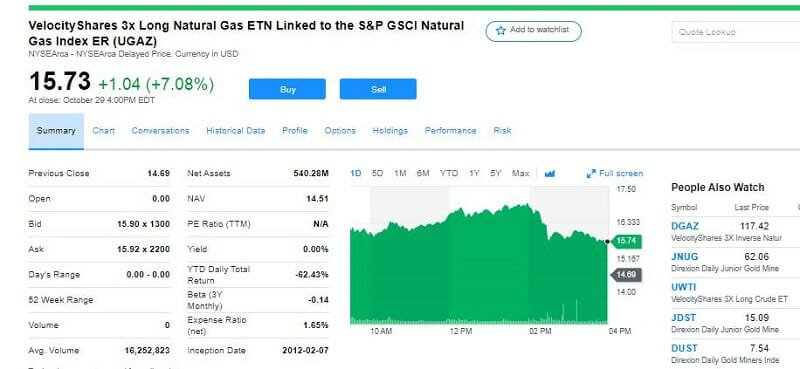
Investing in stocks is a risky game. On some of them, you can have full or partial control.
Risks of Investing in the stock market is a necessary part of investing. If investors want great returns, it is necessary to take great risks. However, the greater risks will not guarantee you will have greater returns. So, additional risks will not always bring you huge returns. But if you are long-term-type investors, you must understand that there will be some periods of underperformance in the investments. And you have to be prepared for that and not panic. If you cannot handle your emotions while investing you are likely to have a smaller chance in the stock market. Taking a risk means to have a higher tolerance for risk. Well, if you are not comfortable with it, you will probably make lower returns. But one thing is in your favor – you will never make great losses.
Anyway, you must understand that there is a necessary trade-off between investment and risk. Greater returns are linked with risks of price changes.
So, it is crucial to decide what is your risk tolerance and you have to do so before you enter the stock market.
What do you want: to protect your initial capital or you are ready for a wild ride with all the ups and downs in the stock market to reach higher returns?
If you can take a low or zero portion of the risk, be prepared that your returns will also be very low. On the other hand, if some investment generates huge returns, think twice is there some high risk you cannot accept.
High-risk investments require to hold a position for a long time, not less than 5 years. Do you have a stomach for that? Why the time matter?
As an investor, you must have the capacity to hold it longer to give shorter-term issues time to fix themselves. But remember, higher levels of risks will not always result in high returns.
There are special risks which investors should be aware of.
What are the risks of investing in the stock market?
We will point on some of them. The risk can be a capital loss. Let’s say you picked up some stock of the company with suddenly poor performing and the market recognizes it as negative. The consequence is that stock price could drop, a lot under the price you paid for them. The stock may even end up worthless. Zero! In such a case, the company’s stock will not trade. Moreover, the company may be delisted.
Further, there is always volatility risk. Stocks are volatile assets, their price may shift significantly in price in a short time. And, also, there is an exceptional market risk influenced by external factors. In such circumstances, the whole market could decline and the stock prices will be affected too. Also, not the whole market has to decline but the sector could. For example, a specific sector may experience downturns. Well, while some will catch the losses but at the same time, such periods are a great chance to buy stocks at a lower price. You see, the stock market is a zero-sum game. You can profit only when some others lose.
Also, the risks of investing in the stock market could come from the nature of the stock. To be honest, the stock price is extremely sensitive to bad news or investors’ sentiment toward some companies. For example, the company issued a poor earnings report or published management changes. The investors may disagree with that and could start selling the stocks.
Very specific risks of investing in the stock market may appear if you try to sell or buy stocks at the wrong time. You must have the right entry but more important, you must have a great exit. The last is the hardest part of the stock market but doesn’t have to be. Check HERE.
As we said, these are just a few risks you can meet while investing in the stock market. The crucial part is to understand what kind of risks you may have with your investments and how you can handle them.
Strategies to avoid risks of investing
Frankly, it’s impossible to entirely avoid risks. What you as an investor can do is put them under control. Actually, you can control your exposure to risks to the agreeable level. The risk you can handle and want to take. For that to do you have to know exactly what are you investing in and identify the possible issues all of these before entering the market and buying a stock. When you identify the risks involved you’ll be able to handle them.
How to manage the risks?
Firstly, define your investment goals, risk tolerance, and limitations, and plan according to what you found. Invest only in a sector that carries a lower risk than you are prepared to take. Go below your possibilities when it comes to risks.
The other solution is a diversified investment portfolio. It will give you good support. Your investment portfolio must contain several different assets. Spread your investments on bonds, utilities, mutual funds, cash, along with the stocks. Never put your whole capital into one single investment.
Combine them, long-term investment, short-term, but be careful about changes in your fundamental investment.
Also, a good decision could be to add derivatives to your portfolio. You can use them as a hedge against the risk. For example, the stock price is dropping, instead of selling them you can avoid losses by shorting futures. Of course, you have to choose futures of underlying assets that match your holdings. The hard part here is the value of futures compared to your stock portfolio. Exchange-traded futures have standard sizes of the contract. Hence, sometimes they will not give you a perfect hedge and you can over-hedge or under-hedge your stocks.
The other stock market risk management possibilities
You can also adopt a maximum portfolio drawdown rule. What does it mean? You have to set limits to the size of the drop in your portfolio value you can allow. In other words, determine how much of your portfolio you can bear to lose. This will decrease your personal ability to make emotional changes at the wrong time.
Keep your focus on stock price, and the value of an investment. Of course, plan ahead. The valuation is actually the heart of long term risk. Smart investors may have the advantage of volatility if they use tactical asset allocation. Follow their example. That will give you a chance to buy more assets when the prices are low but also, to hold fewer stocks when the prices are expensive.
Historical data shows stocks purchased while valuations are low, provide higher returns in the long run. Contrary, buying while valuation is expensive, generates the returns below average.
Bottom line
Risks of investing are part of being in the stock market. Sometimes, you will need to take bigger risks to reach your goals.
Learn the risks of investing in the stock market and do your homework. Make choices that will help you meet your investing plans.
Examine the risk of your investments from time to time. You have to know they still satisfy your risk tolerance.
Once some phrase appeared, we’ll paraphrase it: Be willing for the best, but act like the worst is coming soon.
You must be able to shift fast if suddenly something wrong appears. And, never give up!




















